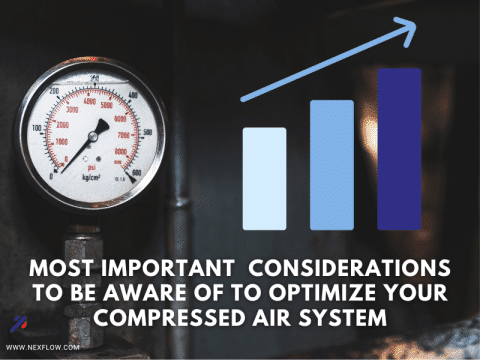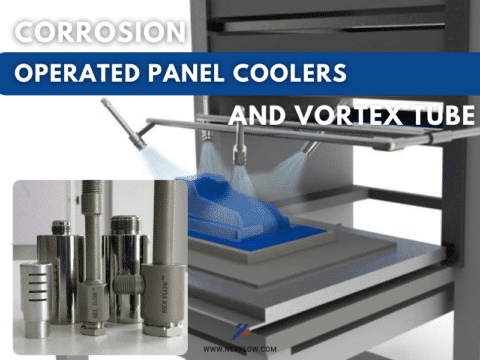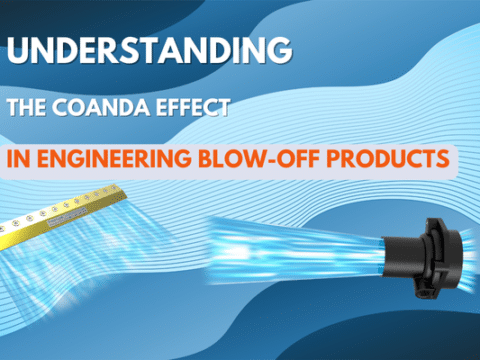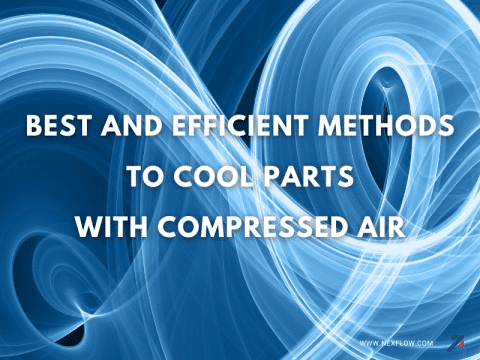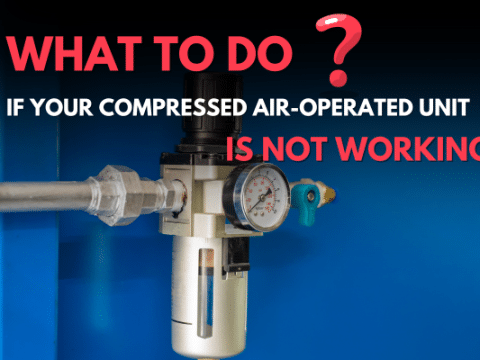
Galvanic corrosion and materials
Galvanic corrosion occurs when two dissimilar metals come into contact. It is also necessary for there to be moisture, but it is rare to find an environment without moisture. I still remember visiting a factory and seeing a competitor’s Cabinet Enclosure Cooler (using vortex tube technology) with a big hole on the aluminum cover, obviously caused by some form of corrosion. While the unit was still functioning, this gaping hole made dirt buildup inside the system a definite probability of shortening the life of the unit which, if it used proper materials, or at least anodized the aluminum could last 20 years.
Air blow off products such as air knives, and amplifiers use (usually) aluminum or zinc. Air knives in particular are normally made of aluminum with steel, or stainless steel screws. The further apart the different metals that are matched together are, in terms of relative potentials, the greater the possibility of galvanic corrosion in a wet or humid environment. For example, stainless steel in contact with copper is less likely to be a risk than when it is in contact with aluminum or galvanized (zinc coated) steel. Seawater or salt laden moist air is more of a risk than contact with rain water or say water used for wash down in a factory. Vortex tube operated cabinet enclosure coolers are typically assembled using stainless steel vortex tubes since stainless is the most common material used for vortex tubes due to long life and durability. The surprise is that some manufacturers still, after many years, use aluminum for mufflers, sleeves and casings exposed to a potentially wet factory environment with a stainless steel vortex tube. As long as the environment stays dry, it is not a problem but if the environment is wet, or the enclosure cooler is used in a wash down environment such as in a NEMA 4 (IP56) area, then the risk of galvanic corrosion is much higher.
Anodizing the aluminum is one way to help prevent that from happening as it provides insulation to the galvanic action. But some manufactures of these units have not even done that.
Nex Flow Air Products Corp. uses stainless steel vortex tubes and stainless steel muffling, sleeves, etc. – no aluminum in their cabinet enclosure coolers (Panel Coolers) to avoid galvanic corrosion which can occur if the units are subjected to a humid environment or wash down procedures. Their NEMA 4 (IP 56) units are stainless steel for NEMA 4-4X environments.
What also comes into play is the surface area of each material used. For example, if there is a large area of aluminum and a little stainless steel screw, there will not be much of a problem. Aluminum air knives for example can have stainless steel screws and the galvanic action remains minimal. Nex Flow anodizes their aluminum material to be extra cautious. Most compressed air operated air knife producers however do not anodize. (The near term negative effect of a factory environment on non-anodized aluminum is another topic.)
To keep the aluminum/stainless mix acceptable, the stainless part should be small and the aluminum part large, and of course, keep them dry and away from a humid area. Better still, either anodize the aluminum or just do not mix the materials.
Nex Flow Air Products Corp. manufactures compressed air operated products for blow off, drying, cleaning, cooling and moving along with specialized pneumatic technology to reduce noise, energy use, and to improve the compressed air productivity in a factory environment.




